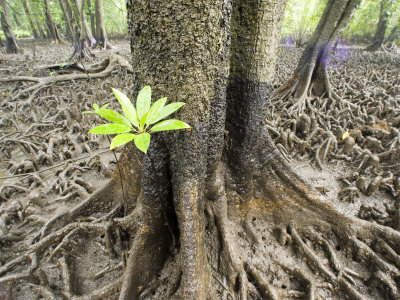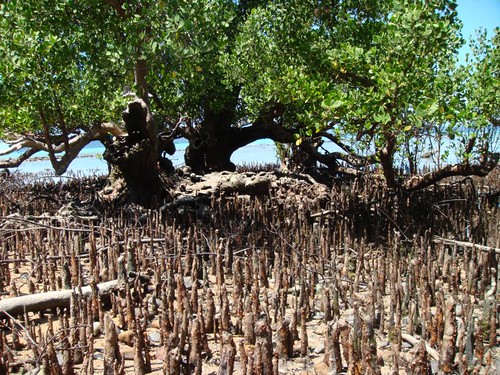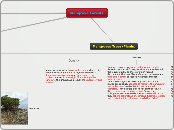Mangrove Forests
Where are mangrove forests found?
Mangrove forests or mangroves are fouind mainly in the tropical climate, especially along sheltered coastal regions and place where rivers constantly deposit clay and silt. EG.Kuantan in Peninsular Malaysai.undefined
Structure of the forest.
A mangrove forest has three distinct horizontal zones. Unlike tropical rainforest or tropical monsoon forest, there are no vertical layers in a mangrove forest. Mangrove trees may vary in height from two metres to 40 metres as the muddy soil cannot provide firm support for tall trees to grow. With an average height of 15 metres, mangrove trees are generally shorter than trees in tropical rainforest. undefined
Mangroves Trees/Plants.
Diversity of plant species.
Mangrove trees have adapted to growing in salt water. Such salt-tolerant plats are known as halophytes. The four main species of mangroves - Avicennia, Sonneratia,Rhizophora and Bruguiera, as shown below. The plants in mangrove forest provide resources such as food, medicine, firewood, charcoal and construction materials.undefined

-Bruiguiera

-Rhizophora

-Sonneratia

-Avicennia
Density
A mangrove forest is dense and luxuriant due to high temperatures and rainfall. Mangrove also form a dense, continuous canopy as they compete for sunlight. Hence, little sunlight filters through the canopy to the ground. As a result, the undergrowth is sparse.undefined
Leaves
Mangrove leaves are broad and have drip tips like those in tropical rainforest, to allow water to flow off the leaves quickly as there are high rainfall thoroughout the year. The surfaces of the leaves are thick and leathery to reduce water loss through transpiration. To enable mangroves trees to grow in salt water, leaves are specially adapted to regulate the amount of salt in the tree. Species like Avicennia are salt secretors. They secrete excess salt on their leaves, then removed by the wind or rain. Bruguiera, Rhizophora and Sonneratia species are ultrafiltrators; they asborb salt instead of secreting it. Remove excess salt by storing it in old leaves, which then fall off.undefined
Flowers and fruits.
Flowers of mangrove trees are colourful. The Bruguiera, for example, has bright red latern-shaped flowers to attract insects to pollinate its flowers. Fruits of Avicennia are buoyant. When they drop into the water, waves carry them away to a new coastal location where they take root. In comparision, fruits of Rhizophora germinate, or begin to grow while they are still attacted to their parent tree and drop directly to the ground to take root. Fruits of this species have an elongated structure with sharp tips that help to anchor themselves in soft muddy soil.undefined
Roots
Mangrove trees have unusual roots which are adapted to soft, waterlogged soil. Due to the waterlogged condition, soil lacks oxygen. Roots of the mangrove trees are specially adapted to the oxygen-deprived soil.
Aerial roots.
At low tide, aerial roots of the Avicennia and Sonneratia trees are exposed, allowing to take in oxygen. Hence, aerial roots are also known as breathing roots. Aerial roots of the Avicennia are pencil-like. Can grow up to 30cm in height. While those of Sonneratia are thicker at the base and peg-like.undefined
Prop roots.
Rhizophora have stilt or prop roots which anchor the trees firmly in the muddy soil.
Kneed roots.
Bruguiera trees have kneed (knee-like) roots that provide firm support on the soft soil.
